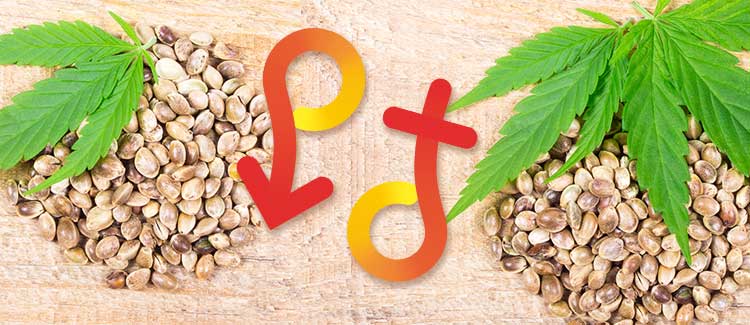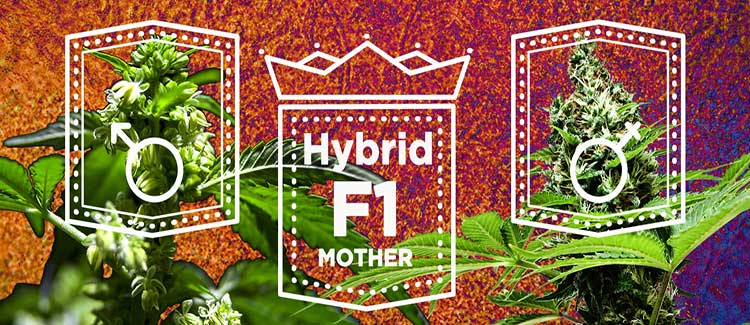How to pick the perfect cannabis mother plant

Mother plants are the pride and joy of many growers. Here are 5 simple tips to picking the right mother plant.
Mother plants are the pride and joy of many growers. Sure, with the rise of feminized and autoflowering seeds, it's become much easier to get new, reliable seeds all throughout the year and experiment with new strains every harvest.
Nonetheless, there’s nothing quite like preserving your own mother plant in all her glory. But how exactly do you choose which plant to call mom? Here are 5 simple tips to picking the right mother plant:
1. USE REGULAR SEEDS:

While feminized seeds are so much easier to work with, most growers agree that you should only pick mother plants from regular seeds.
The main concern with using feminized plants is the increased risk of hermaphroditism. Remember, mother plants are kept in the vegetative phase for a long time and undergo regular pruning. This results in a lot of stress for the plant. which in some feminized varieties can trigger them to suddenly produce male flowers.
2. USE F1 HYBRIDS:

Ideally, you’ll want to preserve mother plants that you’ve bred yourself. In fact, most growers will suggest working with F1 hybrids (the first generation of a cross between 2 parents).
F1 plants are generally considered as boasting the best qualities of both parents, usually making for a very strong set of genetics. Plus, F1 hybrids also tend to grow faster than regular seedlings.
Alternatively, you may consider working with F2 hybrids (the product of crossing 2 F1 hybrids). However, doing so takes a lot of time, and usually isn’t the best option for hobby growers looking for a simple breeding experiment.
Of course, not every grower has his/her own F1 hybrid seeds laying around. If that's the case for you, remember that there’s nothing wrong with working with the regular seeds you have access to.
3. FILTER OUT THE MALES:
Whether you’re working with your own F1 seeds or regular seeds bought online, the process for picking a mother plant is always the same. First, you’ll need to germinate your seeds as you would usually.
Then, take cuttings from your plants before they enter pre-flowering. Most growers take cuttings in the 3rd week of vegetative growth. This is because clones have the same biological age as their donors, and cuttings from a flowering plant will continue to flower.
Remember to label all your cuttings clearly and note which donors they came from. Then, continue growing them under your regularly vegetative growth light cycle (most growers opt for 18/6).
Meanwhile, you can flower your donors (keeping in mind you do so in a different grow space, obviously). Pay close attention to each plant and remove any males as quickly as possible. Then, take their corresponding clones and dispose of them as well to avoid pollinating any of your females.
4. PICK AND CHOOSE:

Once your donors have started flowering, you’ll want to pay close attention to each phenotype’s unique characteristics. After all, what plant you choose to take as a mother is up to you, but growers will usually look for these kinds of qualities:
- Vigor: Mother plants should be strong, robust plants that grow well. A really vigorous mother plant can produce cuttings for years to come, so this is a big quality to look out for. Remember to keep an eye on your clones in their vegetative phase as well to see which plants look to be the healthiest.
- Appearance: Some growers look for specific physical traits in their plants. Indoor growers, for example, might favour smaller plants that are easier to manage. Alternatively, some growers like the appeal of growing big sativas. Other physical qualities like internodal spacing and colour, for example, may also be important to consider.
- Yield: Yield is obviously a big factor for all growers. However, some growers prefer reeling in big harvests, while others are willing to sacrifice a bit of quantity for quality. Whatever side of the fence you’re on, make sure to closely observe your donor plants in their flowering phase. Even before they reach harvest time you’ll likely be able to notice some plants that’ll produce slightly better than others.
- Aroma: Weed connoisseurs love appreciating the smell of different strains. Hence, you’ll want to pay close attention to the different aromas of each of your plants and pick out the ones that most appeal to you. Alternatively, you may be looking for a strain that doesn’t produce too much odour in order to avoid attracting attention.
5. KEEP FLAVOR AND POTENCY IN MIND

Based on what you’re looking for in your plants, you’ll probably be able to reject some of your clones before the end of the flowering cycle based on some of the criteria we listed above.
For those that make it through the initial cut, you’ll probably want to wait till harvest time and run a “taste test” before choosing a final winner (or winner).
Remember, flavor and potency are obviously very important both to growers and consumers. So, come harvest time, be sure to sit down, relax, and sample each one of your donor plants. Based on their potency and flavor, filter through your remaining cuttings until you’re left only with the plants you’re 100% happy with.
Remember, picking the right mother plant depends mainly on your preference as a grower/consumer. You’ll want to pay close attention to both your donors and cuttings, filter out the plants you’re not happy with, until you’re left with 1 (or various) clear winners.




